Bed bugs have become quite common over the last few decades.
In that time… they have made a serious name for themselves.
Though they aren’t known to transmit disease or pose any serious health risk, bed bugs can leave irritating and unsightly bites.
Now the first step to removing an infestation is to identify bed bugs properly.
The problem is when you’re looking for any insect, it can be hard to decipher distinct features with the naked eye…
So often the best way to identify a bed bug is by their size.
Page Contents:
How Big is a Bed Bug?
Bed bugs are ¼ inch in length, typically about the size of a pumpkin seed. If fed recently, these bugs will look elongated and more “balloon-like.”
In fact, bed bugs can become around 50% bigger right after a meal.
Typically, these creatures have oval-shaped bodies and will maintain a reddish-brown color.
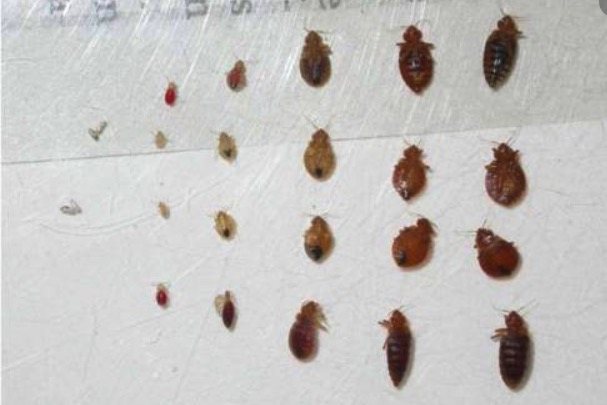
Because of their body shape, bed bugs are incapable of jumping. And though they have 6 legs, they aren’t built for speed either.
On average, bed bugs can travel a distance of 3 to 4 feet per minute.
This might not seem like much, but in an enclosed area like an apartment complex, these creatures are able to spread quickly.
Keep in mind that bed bugs lack wings and are incapable of flying. People who are unfamiliar with bed bugs often mistake them for airborne pests, like mosquitoes.
Bed Bug Size
We have established that bed bugs are about ¼ inch in length, though this will depend on where the bed bug is in its life cycle.
For example:
A bed bug egg can be .5 MM long.
Eggs are often hard to spot because they’re so small and range from pure white to transparent in terms of color.
Eggs are also typically hatched in places where bed bugs hide, sometimes hard to reach places that are (by themselves) not easily seen.
Many bed bug infestations (even after treatment) will face reoccurrence. This is because not all of the eggs were killed during treatment. Since they’re so small, conventional methods of treatment sometimes don’t do the job.
Consider doing a professional heat treatment if you’re struggling to get rid of an infestation.

This type of treatment will likely penetrate all areas of the home and persist against eggs that are in hard to reach places.
Nymphs on the other hand (baby bed bugs), are about 1.5 mm long, and will continuously grow in “stages.”
This means that, for every “stage” of the nymph’s development, they will grow an additional 0.5 mm until they are fully mature. It generally takes 6 to 7 weeks for a bed bug’s life cycle to complete.
How Big Can Bed Bugs Get?
After a meal, bed bugs can reach sizes up to ½ inch long.
Though it’s not likely you’ll come in contact with bed bugs this big, because they tend to feed at night while you’re asleep.
While it’s physically possible to see bed bugs…
(especially after they have fed).
You need to look closely to see them with the naked eye.
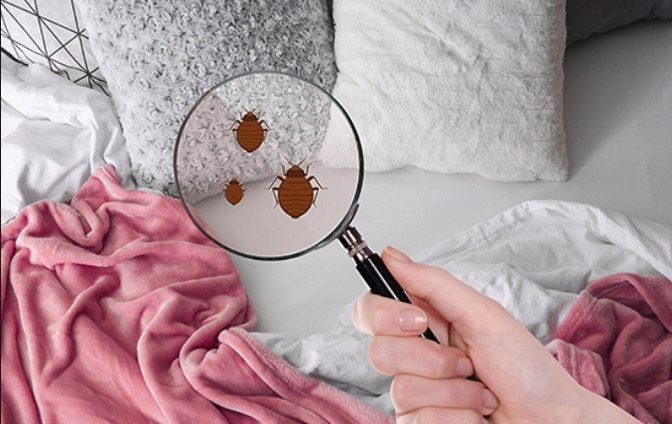
Even after you see them you cannot see their distinct features without the help of a magnifier.
In fact – bed bugs are always mistaken for similar insects, especially their cousins the bat bug.
For this reason, you should be cautious when attempting DIY methods for bed bug removal. Be sure to only use proven methodology, with products that are deemed safe for indoor use.
Bed Bug Size Comparison
To properly understand the size of bed bugs relative to other insects, please refer to the comparison chart below.
Bed Bug Actual Size
Below are 3 pictures of bed bugs in their actual size:
- Here is an example of bed bugs inside a trap.

2. Here is an example of bed bugs and their eggs.
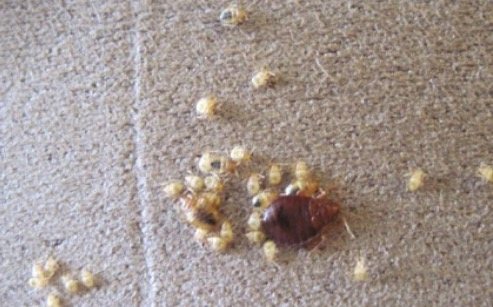
3. Here is an example of the beginning of an infestation. Where two female bed bugs were found on the side of this couch. 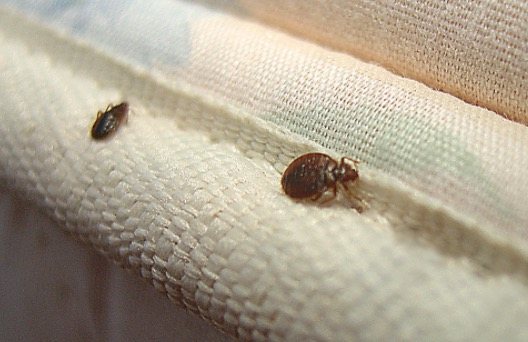
How Big Are Bed Bug Bites?
Bed bug bites can vary in size. They will typically be anywhere from 0.1 to 1.5 inches depending on the skin sensitivity and circumstance.
Individuals with more sensitive skin, and those who are prone to allergic reactions (or hives) are more likely to experience bigger bites.
These bites will typically come in the form of red welts or bumps on your body.
Unlike mosquito bites, which are individual raised bumps…
Bed bug bites will come in clusters or a straight line.

But why do bed bugs bite our skin?
Bed bugs are parasites, meaning that they feed on blood as their sole source of nutrition. In order for them to mature as adults, they must feed fairly consistently.
Though that doesn’t mean they cannot survive without a sustainable food source.
In certain cases, bed bugs can survive up to 12 months without food.
Though apart from survival, for females to reproduce and for an infestation to grow…
They need a reliable blood source to produce eggs consistently.
How to Identify Bites
There are several ways you can determine whether or not you have a bed bug infestation.
One of which is finding blood spots on your sheets. You may also find the presence of bed bug droppings or shed skins on the bedding or on carpet.

But the best way to identify an infestation…
(aside from living bed bugs).
Is through the bites on your body.
This is why it’s key that you learn what bed bug bites look like, so that you can identify them separately from other bites.
Bites from bed bugs are commonly found in areas of exposed skin along the upper body.
These could include:
- Hands
- Face
- Neck
- Shoulders
- Arms etc.
Bites will occur as small or raised areas that can become inflamed, itchy, or in a zig-zag pattern.
These bites won’t always appear right away, but instead can take days (or even weeks) to show themselves.
That is if they show up at all.
It’s important to note that you may not experience bites, while your partner has large bites and severe symptoms.
How Big are Bed Bug Eggs?
Bed bug eggs are extremely small, and very difficult to see with the human eye. They’re about 1 MM long, and most commonly found sticking to wooden or fabric surfaces. These eggs will appear shiny due to a special sticky substance that is secreted to help eggs stay in place.
Sometimes it can be hard to decipher empty eggshells vs. live eggs, aside from 2 key differences.
- Empty eggs will appear flattened and full eggs are more rounded.
- Empty eggs look unpolished while full eggs can appear shiny.
To those that are observant, empty eggs can in fact be seen with the naked eye, though you will need to look closely.
Overall eggs are shaped like a barrel and about the size of a pinhead.
(or a grain of sea salt).
Bed bug eggs are most often clustered together, and you’re likely to see empty eggs mixed in with eggs that have not hatched yet.
Common Areas Where Bed Bug Eggs Are Found
So where do bed bugs lay their eggs? Once inside a structure, bed bugs do not travel very far in order to feed.
Bed bugs feed most often at night while you’re asleep.
And since they primarily live off blood…
The most likely place to find eggs is in a secluded area around the bedroom.
Since bed bugs are no thicker than index cards, they can lay their eggs in extremely hard to reach places.
These include areas like:
- Under furniture.
- Behind wall hangings.
- Within cracks in the walls.
- Under the bed.
- Within the folds of the mattress.
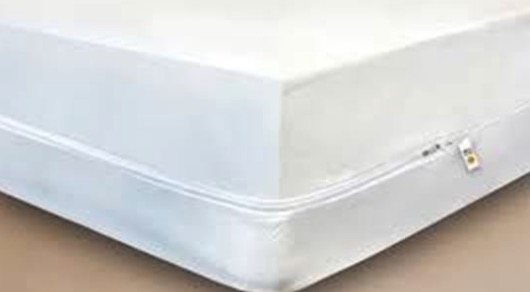
To protect your eggs from hiding under the mattress you should consider getting a special bed bug mattress encasement.
How Big Are Bed Bugs Compared to Fleas
It can be difficult to tell bed bugs and fleas apart, so you’ll need to be observant in order to decipher key distinctions. While bed bugs range from 1.5 to 5 mm long, fleas are generally smaller, at a length of 1.5 to 3 mm long.
You can also tell these creatures apart by their color and body shape.
While bed bugs are more commonly reddish-brown and flat…
Fleas are browner with an oval shape that appears skinnier and longer than the shape of a bed bug. While both of these insects are nocturnal, you’re more likely to find fleas around your furry pets.
Bed bugs on the other hand won’t typically bite pets, as they can’t navigate fur or hair as easily.

This is why bed bugs prefer humans, and will go after exposed areas of the skin for feeding.
How Big Are Bed Bugs Compared to Ticks?
Bed bugs look a lot like ticks and have very similar physical traits. In fact, there is no real size variation between these 2 insects.
Both bugs are wingless and oval-shaped, with a reddish-brown color.
When engorged with blood, both of these insects grow much larger in size.
There is only one main physical difference between the two species…
This is because ticks have 8 legs while bed bugs only have 6 legs.
When engorged with blood, both of these insects grow much larger in size.
So how does the average person tell these two insects apart?
The main way to discern whether you’re looking at a bed bug or a tick is based on location.
Ticks live outside within wooded or grassy areas.
This can be within:
- Birds’ Nests.
- Rat burrows.
- Thick vegetation.
Bed bugs on the other hand will stay indoors because they prefer a stable environment that is free from extreme temperatures.
What Temperature Will Kill Bed Bugs?
Bed bugs can not survive temperatures below 30 degrees F or above 120 degrees F.
How Big Are Bed Bugs When They Hatch?
When bed bugs hatch, they already resemble a fully developed adult–the only difference is that they’re smaller in size. Typically, nymphs are about 1/16 inch and transparent in color.
(When they feed, though, they will turn bright red.)
It takes about 7 weeks for a bed bug to reach adulthood. In that time, they will grow to an average length of ¼ inch and take on a reddish-brown color.
After mating, females will lay their white oval eggs into cracks and crevices’ within the walls or baseboards.
How Many Eggs Do Bed Bugs Lay?
Female bed bugs can lay anywhere from 200 to 250 eggs in their lifetime, and can max out at around 12 eggs per day.
Consider Legal Action if You Have an Infestation
Now that you know a bit more about the size of bed bugs…
It’s important you take steps to properly identify and eradicate an infestation.
Though depending on the circumstance, if you faced an infestation within your apartment, hotel room, or another temporary residence…
You can sue for damages, and potentially receive a payout.
Get connected with a licensed bed bug attorney to learn more, and discuss whether you have a case for a lawsuit. Give us a call at (855) 733-9217 or submit your case information for a free consultation.
There are absolutely no fees unless you win your case.
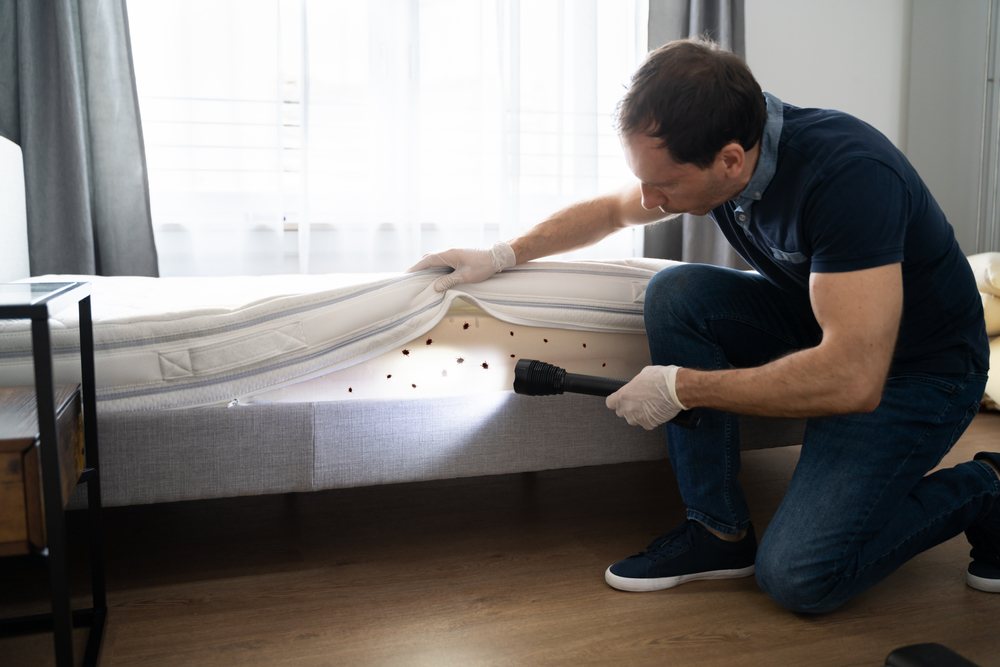
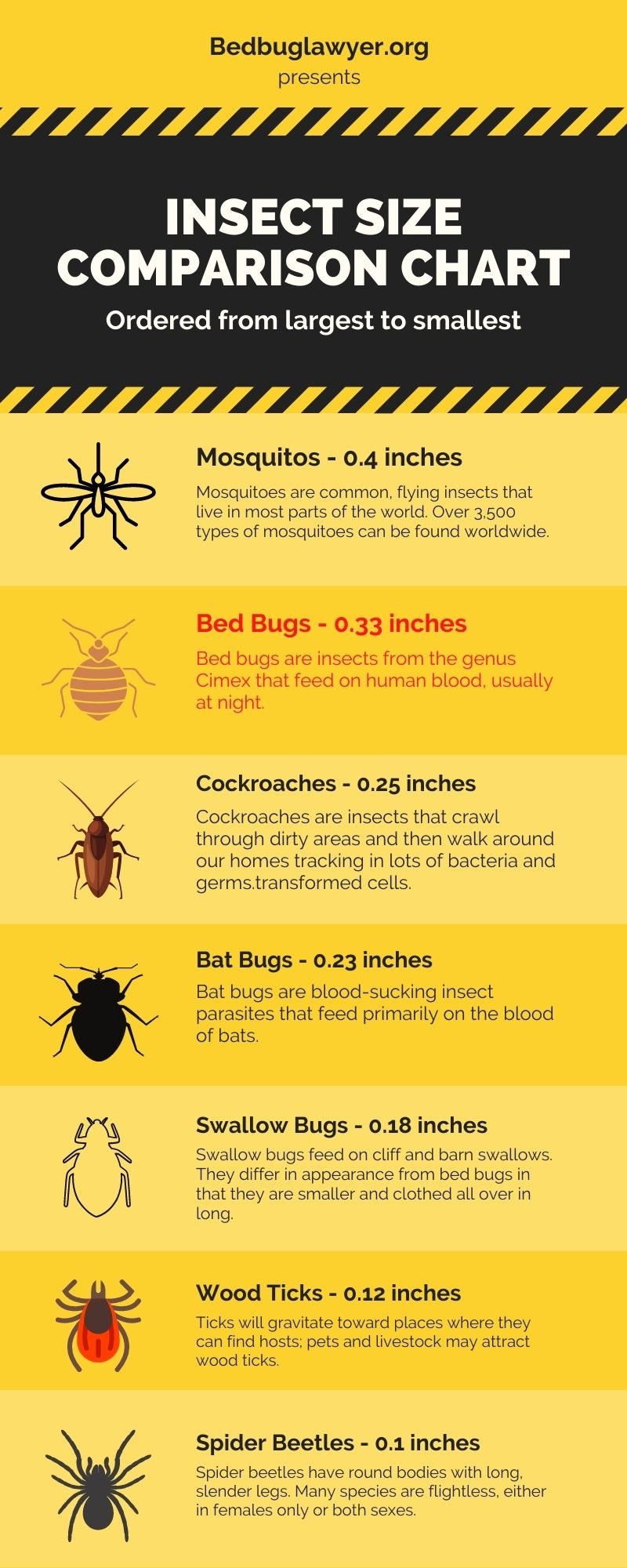




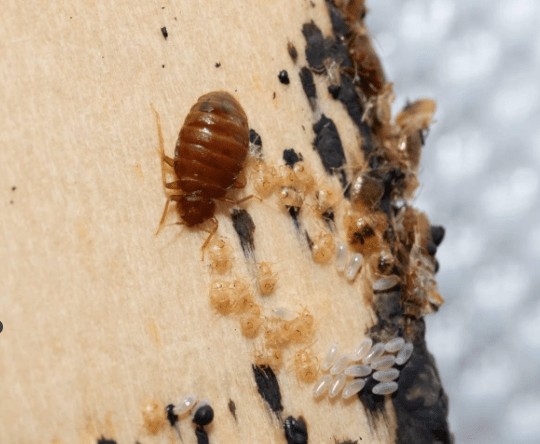

It was extremely helpful when you mentioned blood spots on pillow sheets as a way to identify a bed bug infestation. I’ve been waking up to droplets of red on my blankets and pillowcases lately, and I wondered if this was just my nose bleeding onto it or if it was something else. I became further confused about it after finding out that even my wife who sleeps next to me has had it happen to her. Before any of this gets worse, I’ll start looking for any pest control services that can help us find and get rid of these bed bugs.